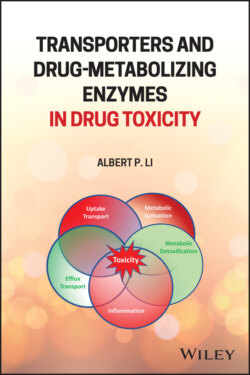Читать книгу Transporters and Drug-Metabolizing Enzymes in Drug Toxicity - Albert P. Li - Страница 28
2.3.3 Structural Alerts for Avoiding Reactive Metabolites
ОглавлениеA compound’s potential to form electrophiles and chemically RMs is determined by its chemical structure. Certain functional groups, referred to as structural alerts, are molecular fragments with high chemical reactivity, or which can be transformed into fragments with high chemical reactivity through bioactivation [16]. These structural alerts can be present in the parent compound or in its metabolites.
Structural alerts regularly have been employed for screening potential RM formation from candidate compounds in drug discovery, in order to limit undesirable toxic effects. General avoidance of certain functional groups related to RM formation is considered a normal practice at the lead optimization/candidate selection stage. Sometimes, if the structural alert must be carried into lead optimization, mitigation strategies learned from industry experience may be suggested to attenuate or avoid toxicity, including: (i) use substitutes resistant to metabolism to replace potential structural alerts; (ii) decrease electronic density; and (iii) introduce a structural element to redirect metabolism potential [16].
An increasing concern, however, is that the value of incorporating structural alerts for screening drug molecule‐associated safety hazards may have been overstated. In a study examining the role of RMs, about 50% of the top 200 drugs marketed in the U.S. and ranked by prescription and sales were found to have one or more alerts in their chemical architecture [17]. Meanwhile, the absence of structural alerts cannot serve as a guarantee of drug safety. For example, ximelagatran did not present any alerts in its chemical structure but was recalled as a thrombin inhibitor with idiosyncratic hepatotoxicity [17].
Figure 2.3 lists some typical structural alerts found in the literature. Since the relationships among these alerts in generating RMs and toxicity are largely unclear, most institutes and companies maintain their own libraries of structural alerts. Several review papers have summarized a comprehensive list of alerts. Enoch et al., for example, reported many structural alerts, each with an outline of their associated mechanistic chemistry of adduct formation. These alerts have been incorporated into the Organization for Economic Co‐operation and Development (OECD) (Q)SAR Toolbox, a freely available software tool for analyzing structural alerts in the public domain [18]. Claesson and Minidis summarized 63 alerts with detailed SMART names, SMART pictures and examples of drugs, which could be the basis for an in‐house structural alert application system. [19]
Figure 2.3 Some typical structure alerts for formation of reactive metabolites found in the literature.
